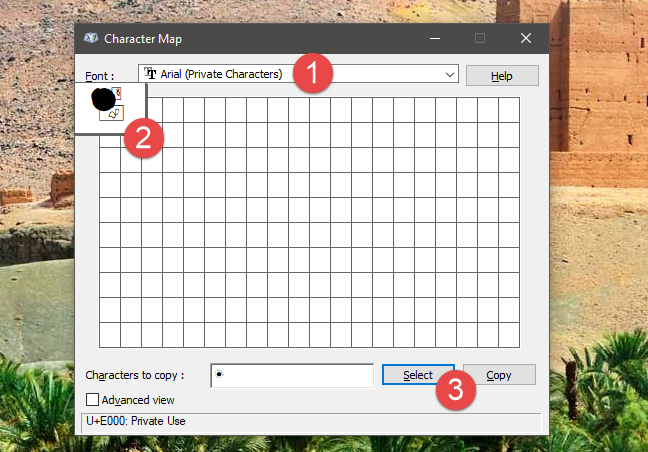

- CREATING FONTS WITH PRIVATE CHARACTER EDITOR HOW TO
- CREATING FONTS WITH PRIVATE CHARACTER EDITOR WINDOWS 10
- CREATING FONTS WITH PRIVATE CHARACTER EDITOR CODE
- CREATING FONTS WITH PRIVATE CHARACTER EDITOR ISO
- CREATING FONTS WITH PRIVATE CHARACTER EDITOR PLUS
Suitable collection of fonts to view the characters of interest. Unibook requires Microsoft Windows TM XP or later as well as a Setting up and Running Unibook 1.1 System Requirements Data are available at (see installation instructions).ġ. Note: This version of the Unibook distribution does not contain character

In addition, it provides a number of new features, suchĪs better support for users preparing character proposals as well as several new features for viewing Chinese Han ideographs It supports the properties and characters defined for Unicode 6.1.0.
CREATING FONTS WITH PRIVATE CHARACTER EDITOR CODE
Unibook Version 6.1.1 is based on Version 6.1.0, which was used to print the code charts for Unicode Version 6.1.0. Proposal editors is the ability to create lists of characters and load them The resulting charts and nameslist by changing the formatting parameters in theĭialogs and save these format settings as files. Support in the program itself, all changes in content can be made to the inputįiles using plain text editors.
CREATING FONTS WITH PRIVATE CHARACTER EDITOR ISO
The program can also be used to prepare drafts and proposals for futureĪdditions to the Unicode and ISO standards. (For that work, a non-publicĬollection of fonts is used, which may differ in some details from the fonts available on your system). Unibook has been used to produce the printed and online code charts forĪs well as code charts for all editions of ISO/IEC 10646 since 2000. On your system and to print cross mapping tables for several otherĬharacter sets to the Unicode Standard, based on the mappings built into and Unibook allows you to view the characters supported by any font installed They can be printed in a format resembling the standard documents. Properties, including tracking cross references to other characters. Interactively to look up information on particular characters or character
CREATING FONTS WITH PRIVATE CHARACTER EDITOR PLUS
Unibook takes a simple text file containing a character name list, plus some font andįormatting configuration files, and produces fully interactive versions of both code charts and character Unknown characters copied from a document and to generate the Unicode value for any character for pasting into documents. Using Unibook, you can print and search listings of character codes and names, as well asĭisplay and search a variety of information about Unicode characters and their properties. However this tool doesn’t have options to export or import characters, so you might be unable to transfer your created characters to another computer.To present information about the characters defined in the Unicode Standard and the International With Private Character Editor you can create your own special characters easily.
CREATING FONTS WITH PRIVATE CHARACTER EDITOR WINDOWS 10
Part 1: Create Special Characters in Windows 10
CREATING FONTS WITH PRIVATE CHARACTER EDITOR HOW TO
Unable to type a special character using your keyboard? Can’t find the symbol you need in the Character Map utility? In this tutorial we’ll show you how to create your own special characters using Windows built-in tool – Private Character Editor, and insert the custom characters into a Word or any other document.


 0 kommentar(er)
0 kommentar(er)
